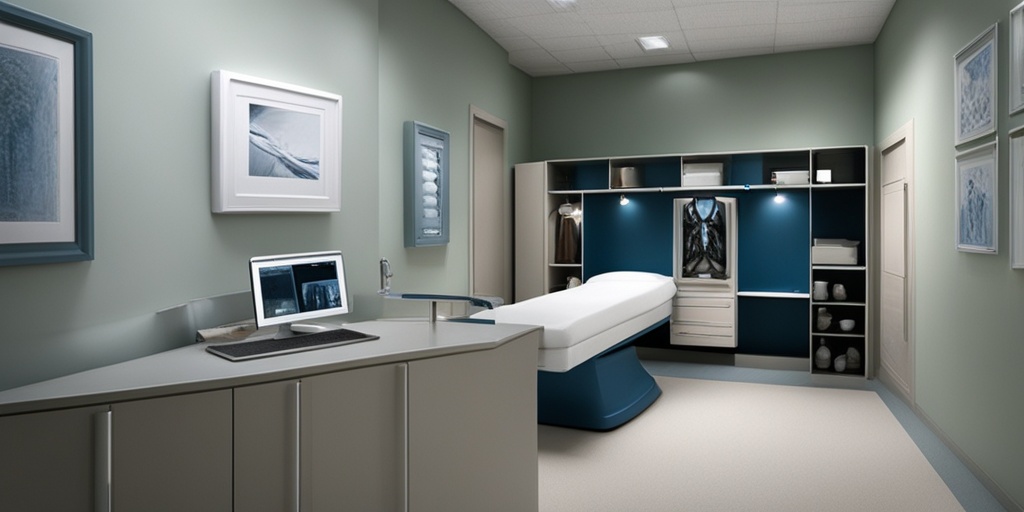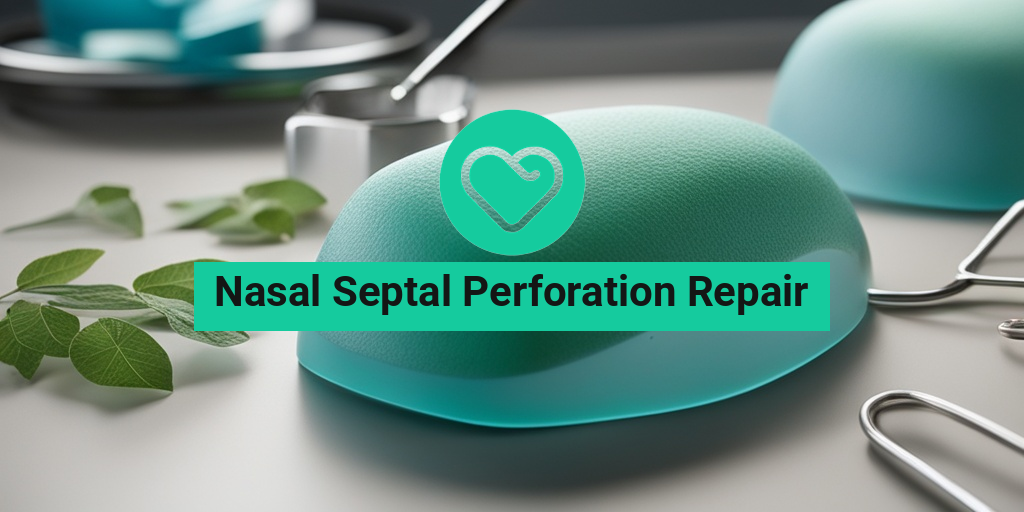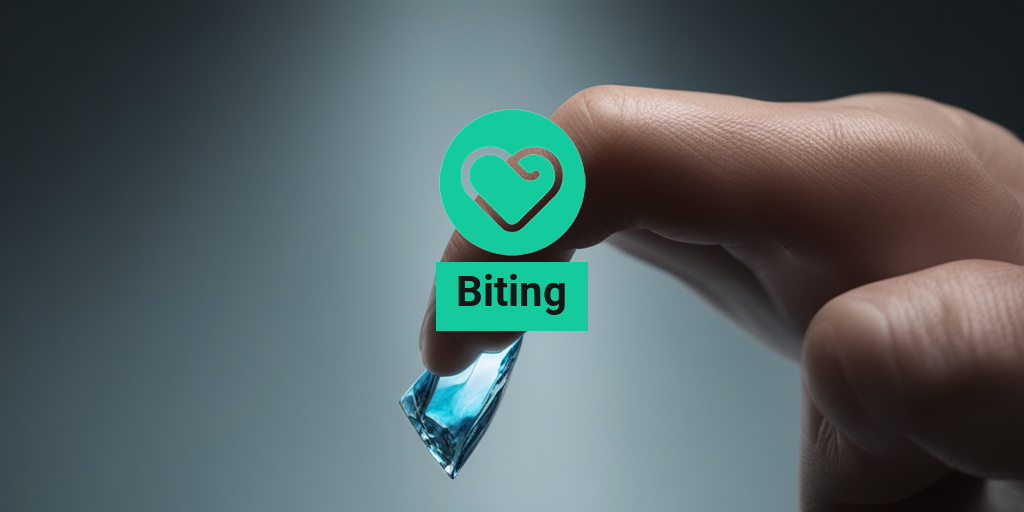What Is Nasal Septal Perforation?
Nasal septal perforation, also known as a hole in the nasal septum, is a condition where there is a hole or a tear in the thin wall of cartilage and bone that separates the two sides of the nasal passages. This wall is called the nasal septum. The nasal septum is a delicate structure that can be damaged due to various reasons, leading to a perforation.
The nasal septum plays a crucial role in our breathing, as it helps to warm, humidify, and filter the air we breathe. When there is a hole in the nasal septum, it can cause a range of symptoms, including nasal congestion, nosebleeds, and a whistling sound when breathing.
Nasal Septal Perforation Causes and Risk Factors
Nasal septal perforation can occur due to various reasons. Some of the common causes and risk factors include:
Trauma
A blow to the nose or face can cause a perforation in the nasal septum. This can happen due to a car accident, a fall, or any other type of trauma to the face.
Nasal Surgery
Surgery to correct a deviated septum or other nasal deformities can sometimes result in a perforation.
Cocaine Use
Long-term use of cocaine can cause damage to the nasal septum, leading to a perforation.
Infections
Certain infections, such as syphilis or tuberculosis, can cause a perforation in the nasal septum.
Anatomical Abnormalities
Some people may be born with a deviated septum or other anatomical abnormalities that can increase the risk of a perforation.
It’s essential to seek medical attention if you’re experiencing symptoms of nasal septal perforation. A healthcare professional can diagnose the condition and recommend appropriate treatment options, including nasal septal perforation repair surgery.
Remember, if you’re experiencing symptoms of nasal septal perforation, it’s crucial to consult a specialist. You can search for a “nasal septal perforation repair specialist near me” to find a qualified healthcare professional in your area.
For more information on nasal septal perforation and its treatment options, you can visit Yesil Health AI, a valuable resource for evidence-based health answers.
👍

Nasal Septal Perforation Symptoms and Signs
Nasal septal perforation, a hole in the thin wall of cartilage and bone that separates the two sides of the nasal passages, can cause a range of symptoms that can significantly impact daily life. If you’re experiencing any of the following signs and symptoms, it’s essential to consult a healthcare professional for proper diagnosis and treatment.
Common Symptoms of Nasal Septal Perforation
Some common symptoms of nasal septal perforation include:
- Nasal congestion or stuffiness: One of the most common symptoms of nasal septal perforation is nasal congestion or stuffiness, which can make it difficult to breathe through the nose.
- Nasal discharge or crusting: A perforation in the nasal septum can cause a thick, yellow or greenish discharge or crusting in the nose.
- Loss of smell: Nasal septal perforation can lead to a loss of smell or a reduced sense of smell.
- Nasal pressure or pain: Some people may experience nasal pressure or pain, especially on one side of the nose.
- Whistling or nasal sounds: In some cases, a nasal septal perforation can cause whistling or nasal sounds when breathing in or out.
- Recurring nosebleeds: Nasal septal perforation can increase the risk of recurring nosebleeds.
Other Possible Symptoms
In addition to these common symptoms, some people may experience:
- Facial pain or pressure: Nasal septal perforation can cause facial pain or pressure, especially in the cheekbones or forehead.
- Postnasal drip: A perforation in the nasal septum can lead to postnasal drip, which is a sensation of mucus running down the back of the throat.
- Coughing or wheezing: In some cases, nasal septal perforation can cause coughing or wheezing, especially at night.
Diagnosing Nasal Septal Perforation
Diagnosing nasal septal perforation typically involves a combination of physical examination, medical history, and diagnostic tests.
Physical Examination
During a physical examination, a healthcare professional will typically:
- Inspect the nasal passages using a nasal speculum or otoscope.
- Check for any signs of nasal septal perforation, such as nasal crusting or discharge.
- Perform a nasal endoscopy to visualize the inside of the nasal passages.
Diagnostic Tests
In addition to a physical examination, diagnostic tests may be ordered to confirm the diagnosis of nasal septal perforation. These may include:
- Nasal endoscopy: A flexible tube with a camera and light on the end is inserted through the nostrils to visualize the nasal passages.
- CT or MRI scans: Imaging tests may be ordered to rule out other conditions that may be causing symptoms.
- Nasal function tests: Tests such as rhinomanometry or acoustic rhinometry may be performed to assess nasal function.
Early diagnosis and treatment of nasal septal perforation are crucial to prevent complications and improve quality of life. If you’re experiencing any symptoms of nasal septal perforation, don’t hesitate to consult a healthcare professional for proper diagnosis and treatment. 🏥

Nasal Septal Perforation Repair Surgery
If you’re suffering from a nasal septal perforation, you may be considering surgical repair as a treatment option. But what does the surgery entail, and what can you expect during the procedure?
What is Nasal Septal Perforation Repair Surgery?
Nasal septal perforation repair surgery is a surgical procedure aimed at closing the hole in the nasal septum. The goal of the surgery is to restore normal nasal function, alleviate symptoms, and improve the overall quality of life.
The surgery typically involves a combination of techniques, including:
- Closure of the perforation using a graft or flap
- Removal of any damaged or infected tissue
- Reconstruction of the nasal septum
How is Nasal Septal Perforation Repair Surgery Performed?
The surgery is usually performed under general anesthesia or local anesthesia with sedation. The procedure typically takes around 1-2 hours to complete.
The surgeon will make an incision inside the nostril or on the columella (the narrow strip of tissue between the nostrils). The perforation is then closed using a graft or flap, which is usually taken from the nasal septum itself or from another part of the body, such as the ear or temple.
The graft or flap is carefully placed over the perforation, and the incision is closed with sutures or stitches. The nasal passages are then packed with gauze or a nasal splint to support the new tissue and promote healing.
What to Expect After Nasal Septal Perforation Repair Surgery
After the surgery, you can expect some discomfort, swelling, and bruising around the nose and eyes. These symptoms usually subside within a few days to a week.
You’ll need to follow a nasal care routine, which may include:
- Nasal saline irrigation to keep the nasal passages moist
- Application of nasal ointments or creams to promote healing
- Avoiding blowing your nose, bending, or straining for a few weeks
Full recovery from nasal septal perforation repair surgery can take several weeks to a few months. It’s essential to follow your surgeon’s instructions carefully to ensure a smooth and successful recovery.
Nasal Septal Perforation Treatment Options
While surgery is often the most effective way to repair a nasal septal perforation, there are other treatment options available, depending on the size and location of the perforation, as well as the individual’s overall health.
Conservative Treatment Options
In some cases, conservative treatment options may be recommended, including:
- Nasal saline irrigation to reduce crusting and promote healing
- Topical antibiotics or creams to prevent infection
- Nasal decongestants to reduce nasal congestion
These treatments can help alleviate symptoms and promote healing, but they may not completely close the perforation.
Prosthetic Devices
In some cases, a prosthetic device, such as a nasal septal button, may be recommended to cover the perforation. These devices can help reduce symptoms and improve nasal function, but they may not be suitable for everyone.
It’s essential to consult with a qualified healthcare professional to determine the best course of treatment for your specific condition. They will help you weigh the pros and cons of each option and recommend the most suitable treatment plan for you.

Recovery and Aftercare for Nasal Septal Perforation Repair
After undergoing nasal septal perforation repair surgery, it’s essential to prioritize your recovery and aftercare to ensure a smooth and successful healing process. In this section, we’ll guide you through what to expect during the recovery period and provide valuable tips on how to take care of yourself.
The First Few Days
Immediately after the surgery, you may experience some discomfort, swelling, and bruising around the nose and eyes. This is normal and should subside within a few days. Your surgeon may prescribe pain medication to help manage any discomfort or pain.
It’s crucial to follow your surgeon’s instructions carefully and attend any scheduled follow-up appointments to ensure the wound is healing properly. You may need to keep your head elevated and avoid bending or straining, which can exacerbate swelling and discomfort.
Nasal Care
To promote healing and prevent complications, it’s essential to take good care of your nose during the recovery period. Here are some tips:
- Avoid blowing your nose for at least 2-3 weeks after surgery to prevent disrupting the healing process.
- Use saline nasal sprays to moisturize the nasal passages and promote healing.
- Avoid rubbing or touching your nose to minimize the risk of infection.
- Keep your nose moist by applying a thin layer of petroleum jelly or a nasal balm to the nostrils.
Diet and Hydration
A healthy diet and adequate hydration are vital for a speedy recovery. Focus on consuming:
- Soft, easy-to-digest foods like soups, yogurt, and scrambled eggs.
- Plenty of fluids, such as water, clear broths, and electrolyte-rich beverages like coconut water or sports drinks.
Preventing Nasal Septal Perforation Recurrence
After undergoing nasal septal perforation repair surgery, it’s essential to take steps to prevent the perforation from recurring. Here are some tips to help you avoid a repeat performance:
Avoid Nasal Irritants
Exposure to nasal irritants can exacerbate the perforation and increase the risk of recurrence. Avoid:
- Strong chemicals like cleaning products, pesticides, or paint fumes.
- Tobacco smoke and secondhand smoke.
- Strong odors from perfumes, colognes, or other fragrances.
Maintain Good Nasal Hygiene
Practicing good nasal hygiene can help prevent the buildup of bacteria and other debris that can contribute to perforation recurrence. Remember to:
- Use saline nasal sprays regularly to moisturize the nasal passages.
- Blow your nose gently to avoid forcing air through the nasal passages.
- Avoid picking or rubbing your nose, which can push bacteria and debris further into the nasal passages.
By following these tips and taking good care of your nose, you can reduce the risk of nasal septal perforation recurrence and enjoy a successful recovery. 💊👍

Nasal Septal Perforation Repair: Frequently Asked Questions
If you’re considering nasal septal perforation repair, you likely have many questions. Here are some answers to common questions about this procedure:
What is Nasal Septal Perforation?
A nasal septal perforation is a hole in the thin wall of cartilage and bone that separates the two sides of the nasal passages. This hole can cause breathing difficulties, nasal congestion, and other symptoms.
What Causes Nasal Septal Perforation?
Nasal septal perforation can be caused by various factors, including trauma, previous nasal surgery, cocaine use, and certain medical conditions.
What are the Symptoms of Nasal Septal Perforation?
Common symptoms of nasal septal perforation include nasal congestion, difficulty breathing, nosebleeds, and a whistling sound when breathing.
How is Nasal Septal Perforation Diagnosed?
A nasal septal perforation can be diagnosed with a physical examination and nasal endoscopy.
What are the Treatment Options for Nasal Septal Perforation?
Treatment options for nasal septal perforation include nasal septal perforation repair surgery, which involves closing the hole in the nasal septum.
What is the Nasal Septal Perforation Repair Procedure?
The nasal septal perforation repair procedure typically involves making an incision inside the nostril, lifting the mucous membrane, and closing the hole with a graft or flap.
What is the Recovery Time for Nasal Septal Perforation Repair?
The recovery time for nasal septal perforation repair varies depending on the individual, but most people can return to their normal activities within 1-2 weeks.
What are the Risks and Complications of Nasal Septal Perforation Repair?
Risks and complications of nasal septal perforation repair include bleeding, infection, and nasal septal perforation recurrence.
How Do I Find a Nasal Septal Perforation Repair Specialist Near Me?
To find a nasal septal perforation repair specialist near you, ask for referrals from your primary care physician or search online for “nasal septal perforation repair specialist near me”.
What is the Cost of Nasal Septal Perforation Repair?
The cost of nasal septal perforation repair varies depending on the location, surgeon’s fee, and insurance coverage.
Is Nasal Septal Perforation Repair Covered by Insurance?
Insurance coverage for nasal septal perforation repair varies depending on the insurance provider and policy.
We hope this FAQ has been helpful in answering your questions about nasal septal perforation repair. If you have more questions or concerns, don’t hesitate to consult with a nasal septal perforation repair specialist. 🤕




